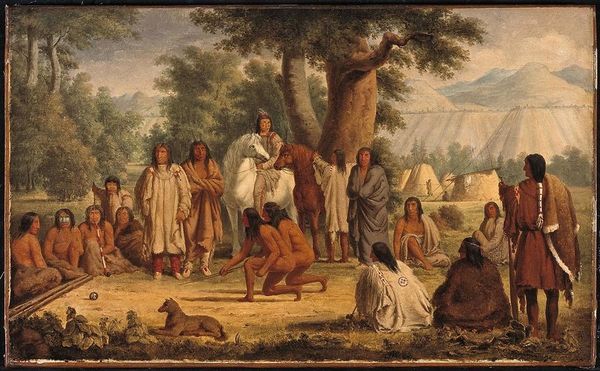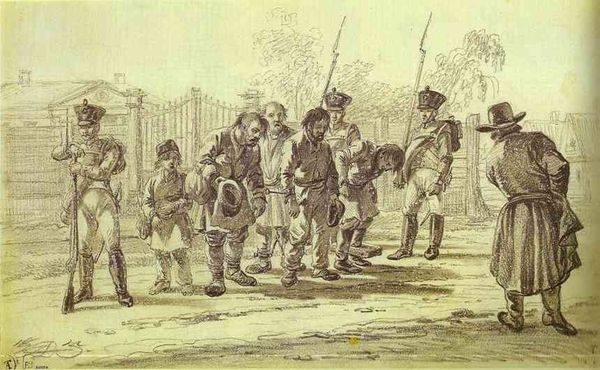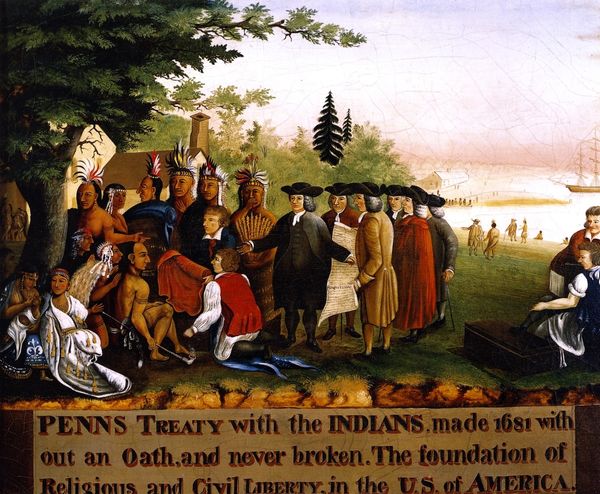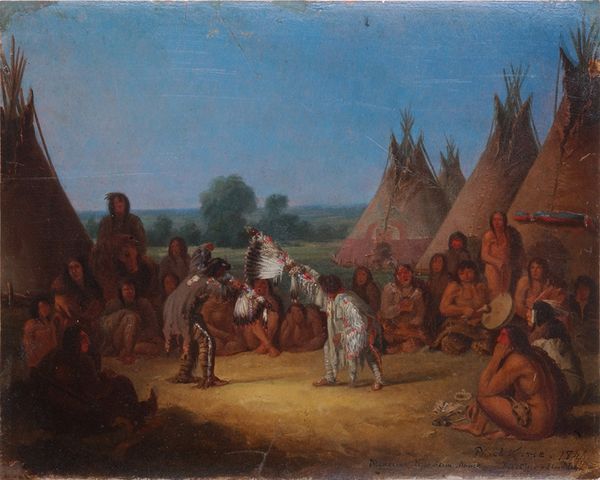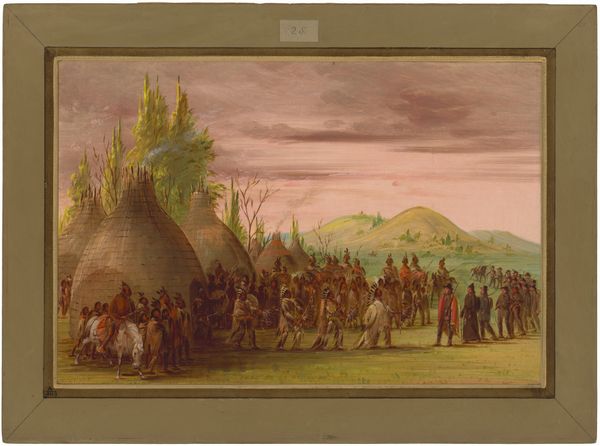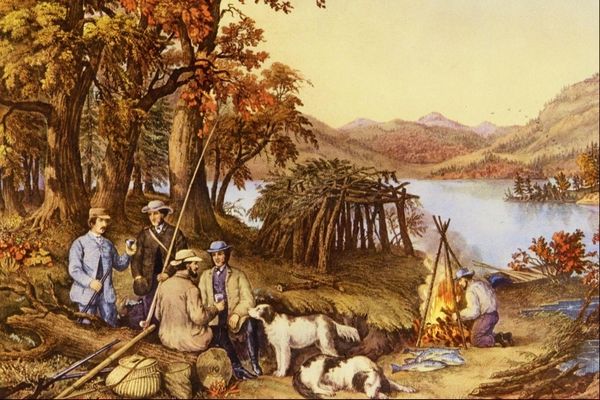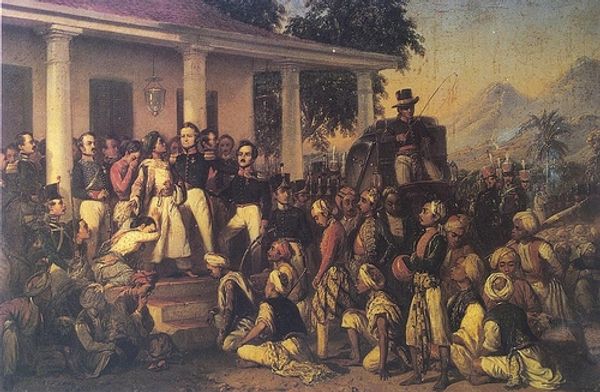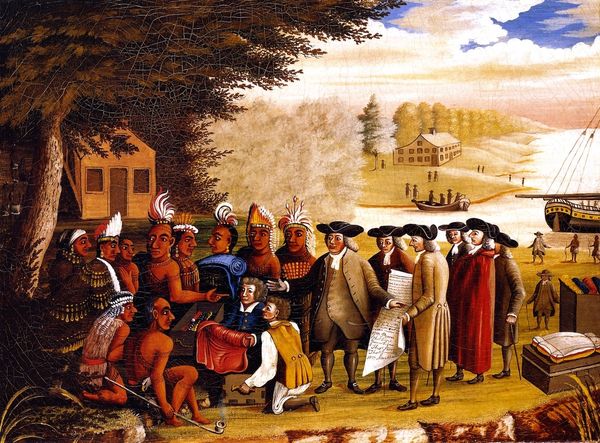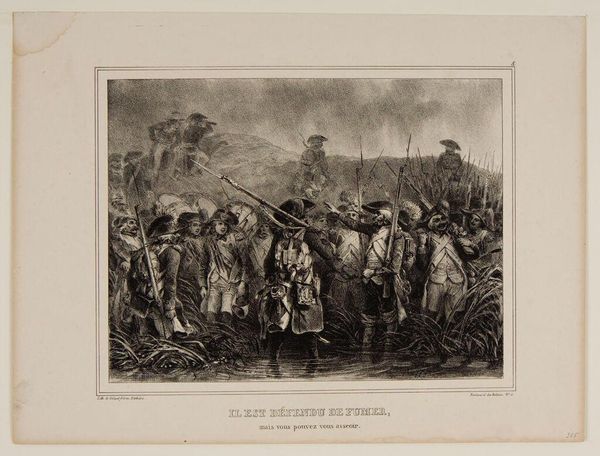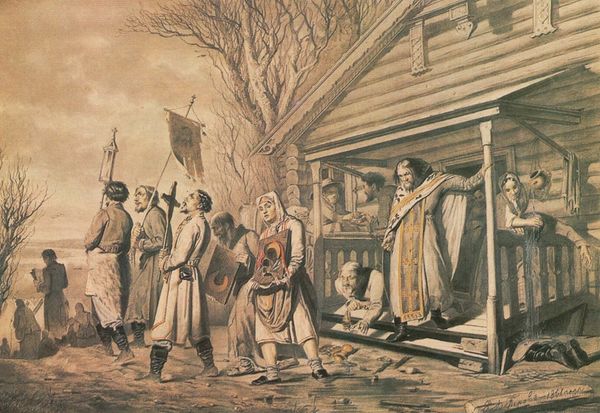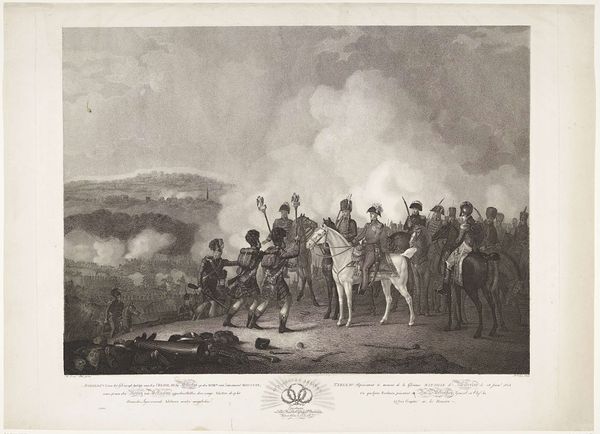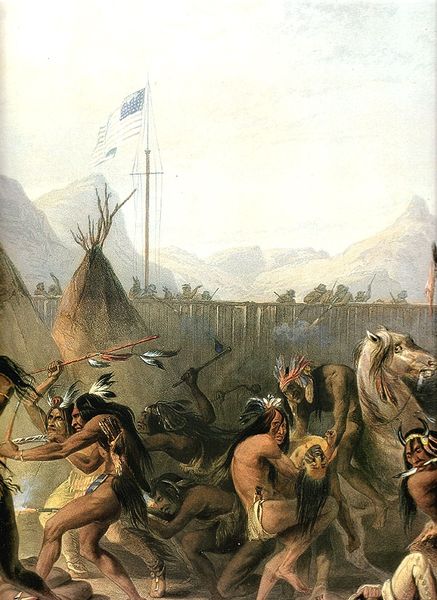
painting, oil-paint
#
narrative-art
#
painting
#
oil-paint
#
oil painting
#
history-painting
Copyright: Public domain
Curator: Edward Hicks painted this scene, entitled "Penn's Treaty," around 1847, depicting a moment in 1681. What's your initial reading of the composition? Editor: My immediate response is one of carefully staged harmony. The gathering under the welcoming branches, the gestures of giving and receiving...it feels purposefully arranged, doesn't it? Almost allegorical. Curator: Indeed. Note the precise orchestration of the figures into distinct groups, a formal device that segments and organizes the narrative space. Consider how the triangular structure created by the canopy and the treaty document directs our gaze to the interaction at the very center. Editor: And the figures themselves—observe the indigenous people beneath the protective embrace of the tree, contrasted with Penn and his men, radiating outward to meet them. Trees can symbolize knowledge, protection, and interconnectedness. In this image, the tree adds symbolic protection as both sides participate in negotiations. Curator: And notice Hicks' deployment of color. The subdued browns and greens lend a naturalistic air, punctuated by calculated accents of red and white—vestiges of ceremony and civility, wouldn't you say? Consider too, how light articulates space. The tonal balance is very exact to keep the image balanced and inviting. Editor: Exactly, it draws our attention and prompts a deeper consideration of what treaty signifies. And that document unfurled, illuminated as a beacon. A very powerful symbolic use. I can't help but also notice the implied absence; where are the consequences? Is there visual symbolism of their implications? Curator: Absence is its own argument, in a sense, given later histories. Now, from a purely formal vantage, we can analyze the interplay between figure and ground. Consider the perspectival construction… Editor: But the real point of interest lies not just in Hicks' manipulation of paint, but how that symbolic layering constructs a specific memory – perhaps a deliberately softened one. We must examine that intent to fully appreciate what Penn's Treaty is about. Curator: Yes, I concur that examining the convergence of formal decisions alongside their symbolic consequences provides, arguably, the fullest comprehension. Editor: Absolutely. Both inform the other in a painting so ripe with symbolism and yet guided by composition choices.
Comments
No comments
Be the first to comment and join the conversation on the ultimate creative platform.
